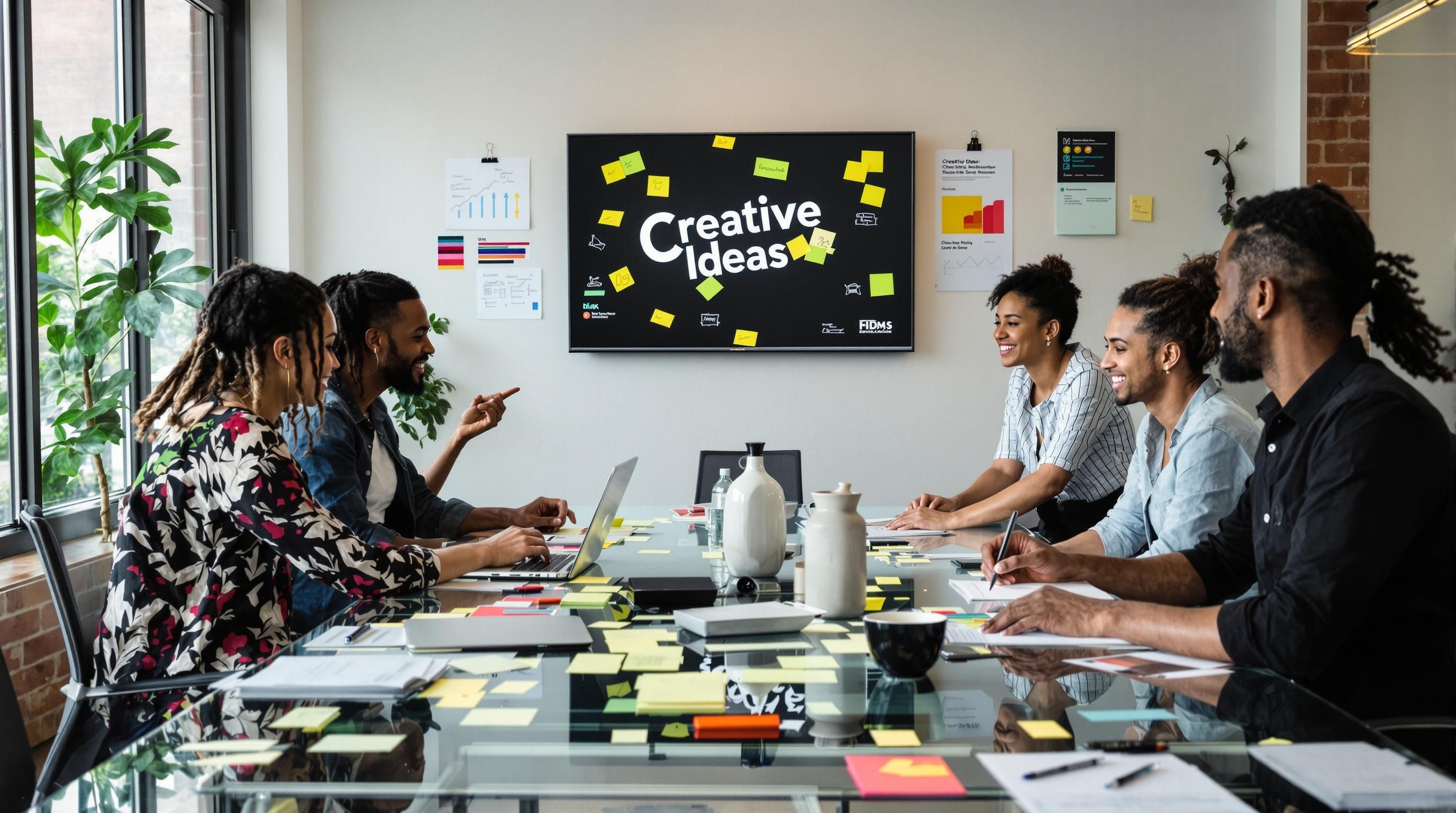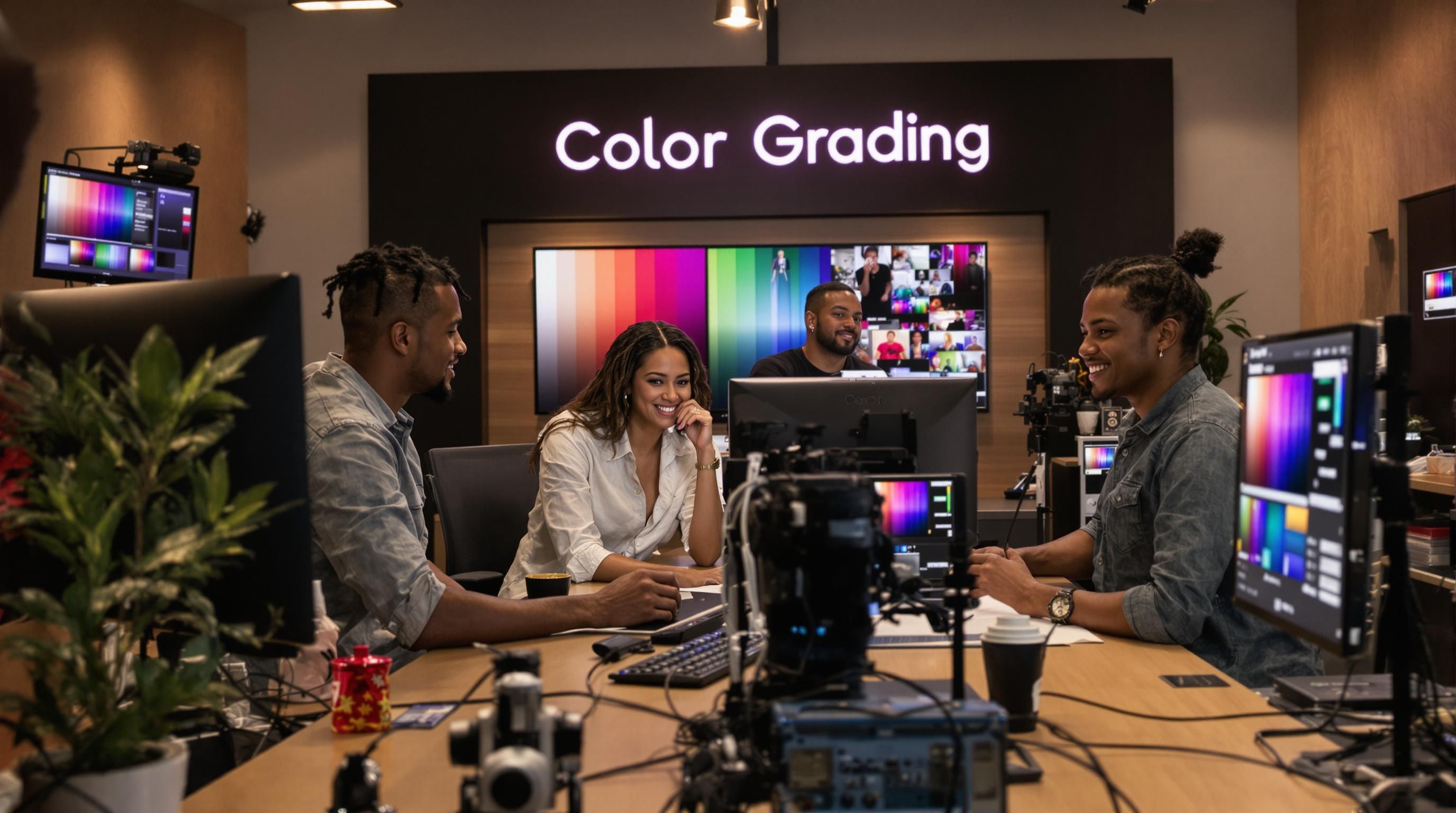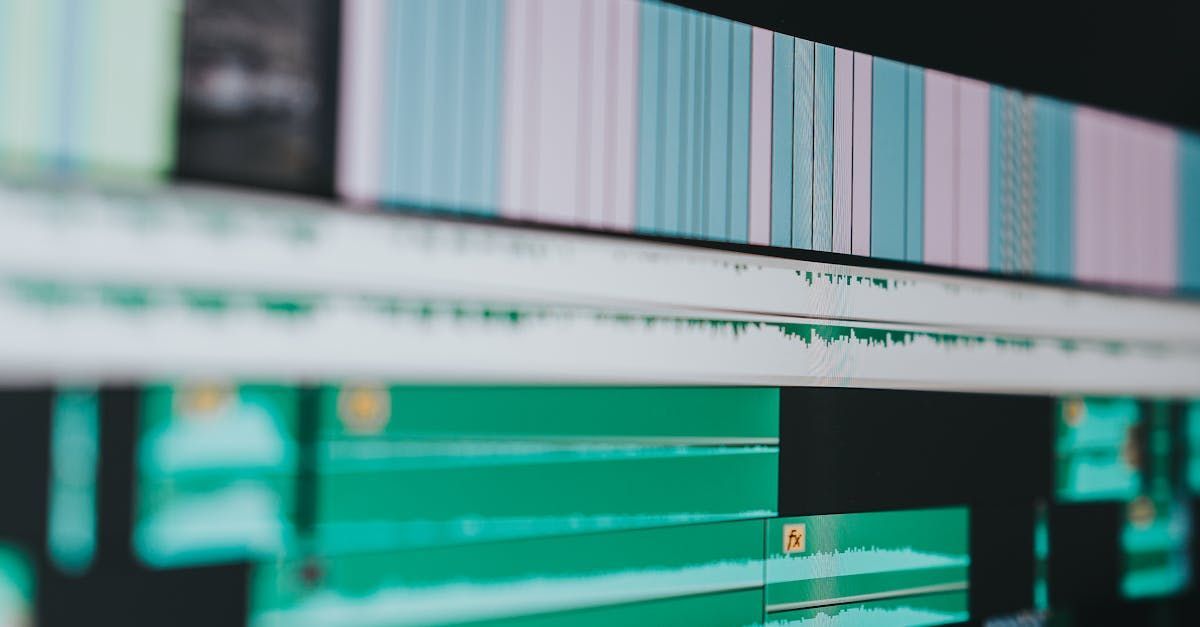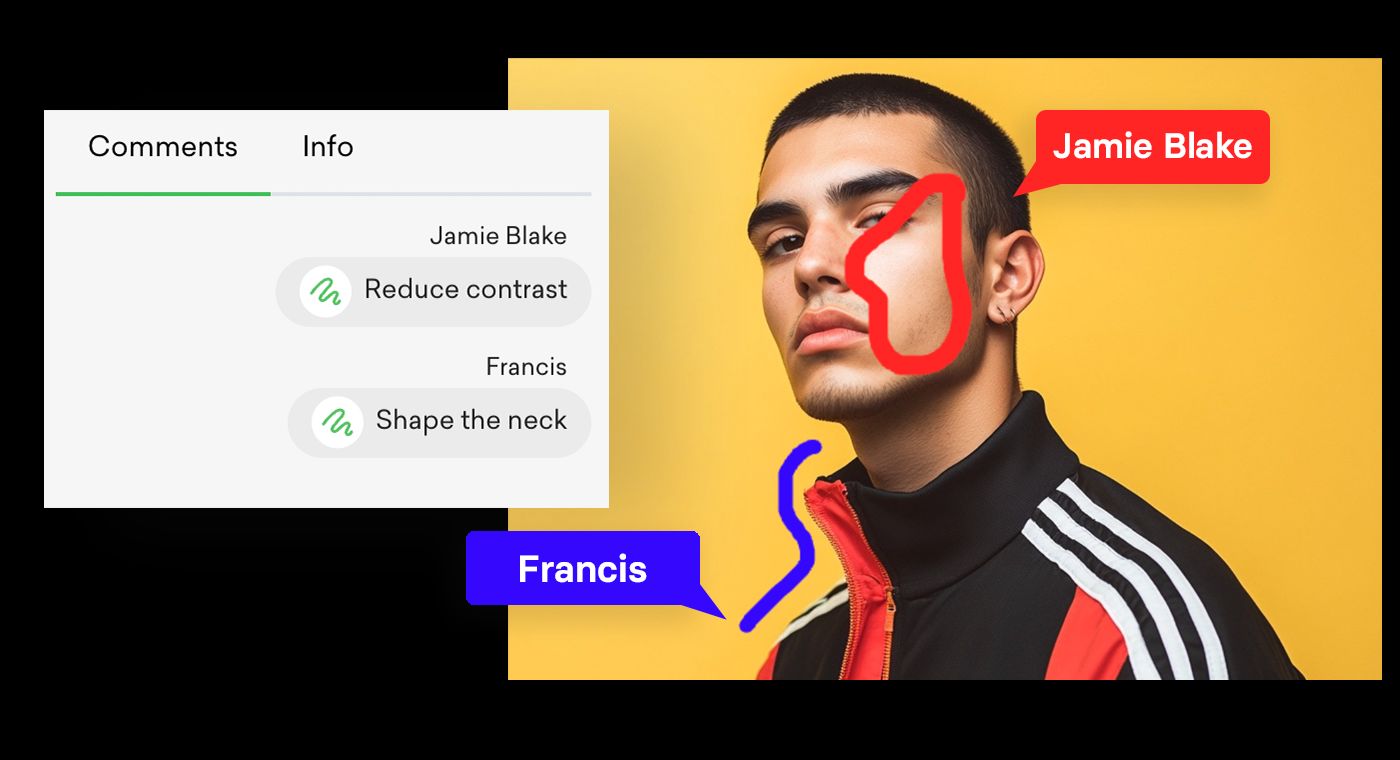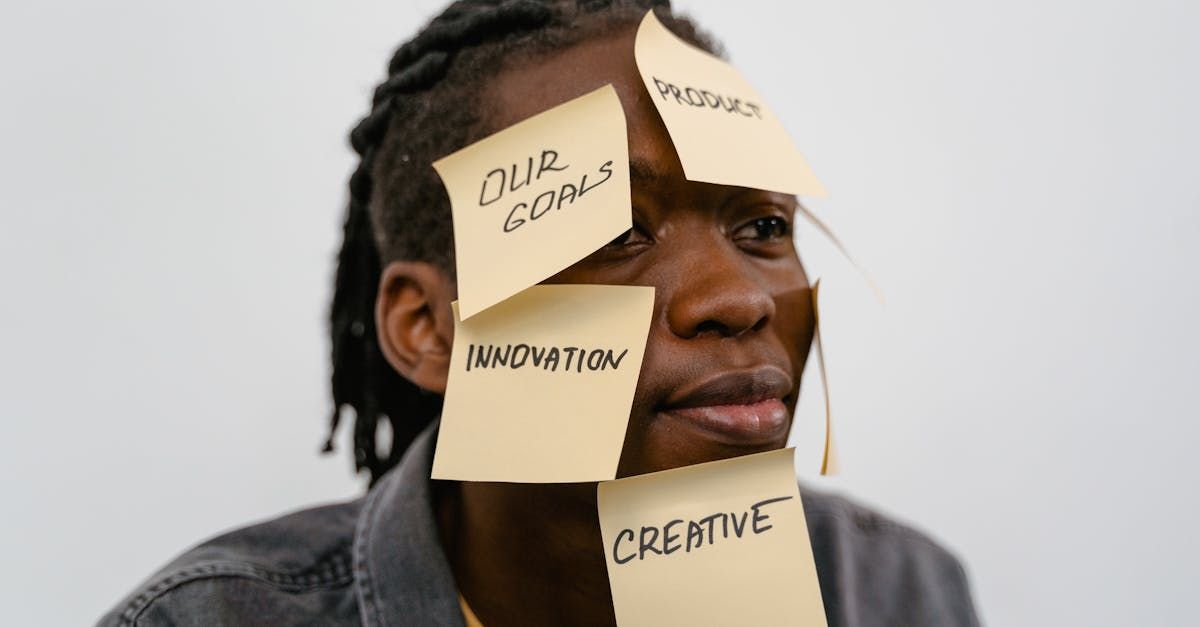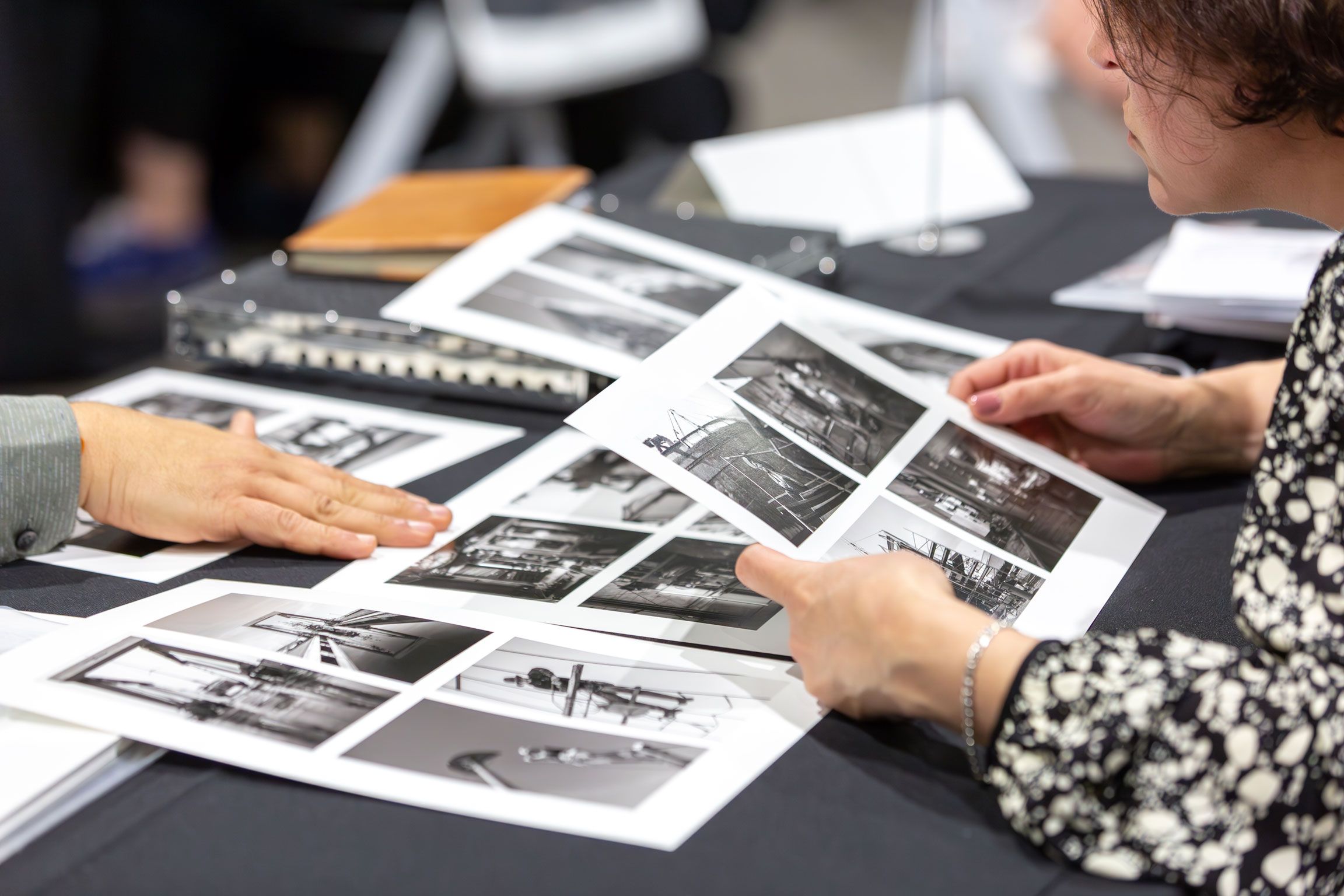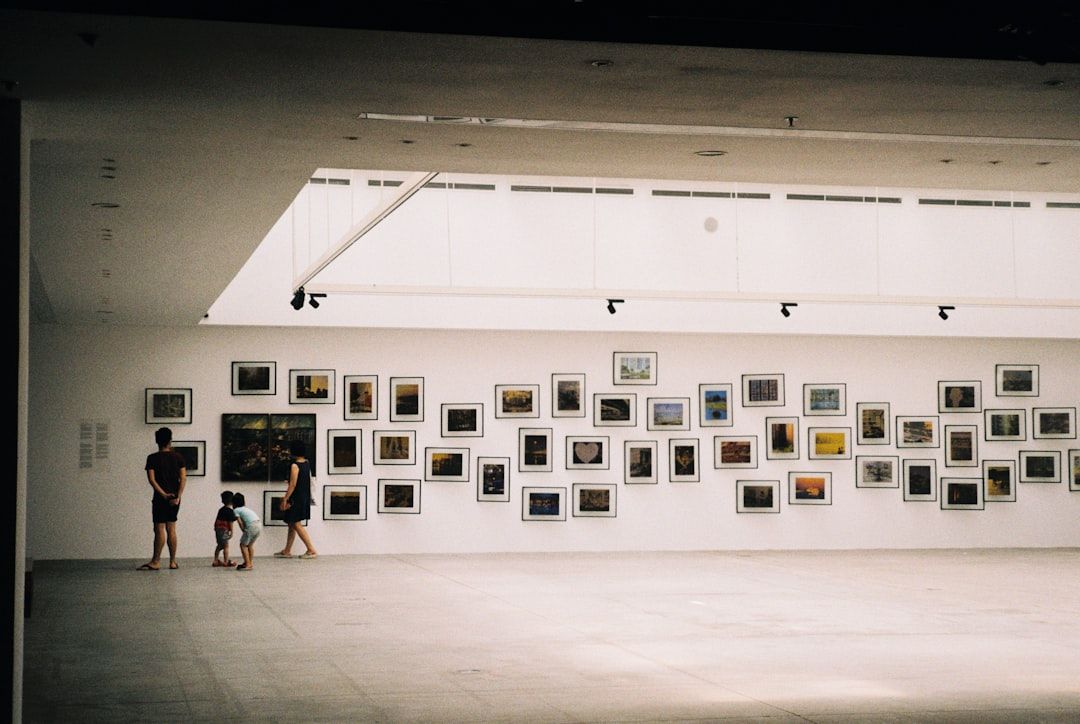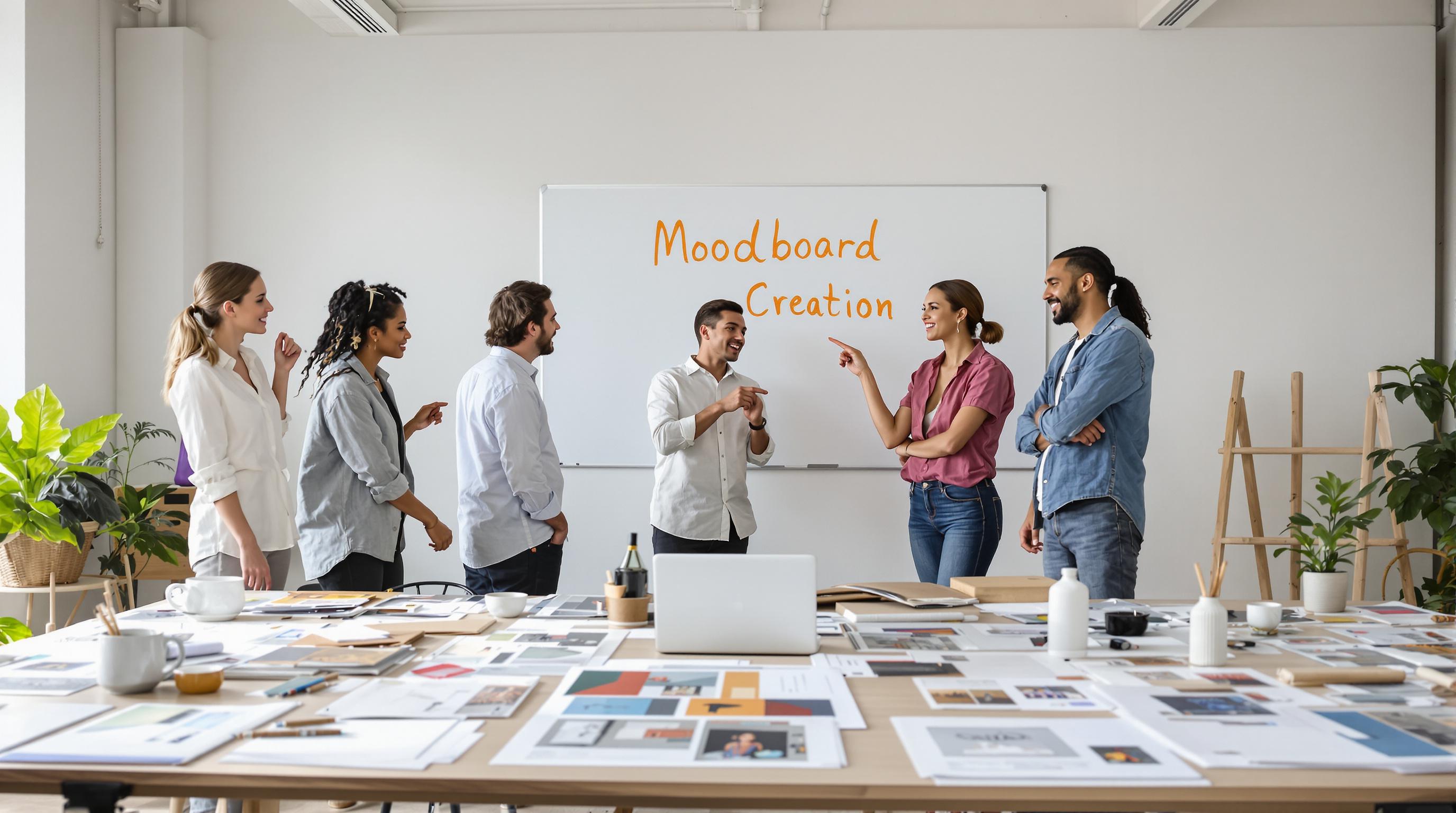Video editing used to mean cutting and pasting scenes together in a rigid order, a slow and unforgiving process. Now, things have flipped. Non-linear editing lets editors move clips, add effects, and revise any part of a project without touching the original files. That freedom is not just a technical upgrade. It’s the reason even a small creative team can pull off the kind of polished videos that once took an entire studio.
Table of Contents
Quick Summary
| Takeaway | Explanation |
| Non-Linear Editing Enhances Creative Flexibility | Non-linear editing systems allow editors to rearrange and modify video clips without being bound by a sequential process, facilitating collaborative workflows and rapid prototyping of ideas. |
| Technological Empowerment Through NLE | NLE systems provide access to advanced features like multi-camera editing, visual effects, and audio mixing, enabling even small teams to produce professional-quality content. |
| Selecting the Right NLE Software is Crucial | Choosing appropriate non-linear editing software based on user interface, complexity, and available support can significantly impact the success of video production projects. |
| Continuous Learning Improves Editing Skills | Mastery in non-linear editing requires a structured learning strategy that includes online courses, tutorials, and hands-on practice, encouraging ongoing skill development. |
| Proper Technical Preparation is Essential | Investing in high-performance hardware and maintaining organized media storage are critical for achieving optimal performance in non-linear editing tasks. |
Understanding Non-Linear Editing Basics
Non-linear editing represents a transformative approach to video and audio production that fundamentally changes how creative professionals manipulate digital media. Unlike traditional linear editing methods that required sequential video processing, NLE provides unprecedented flexibility and creative control.
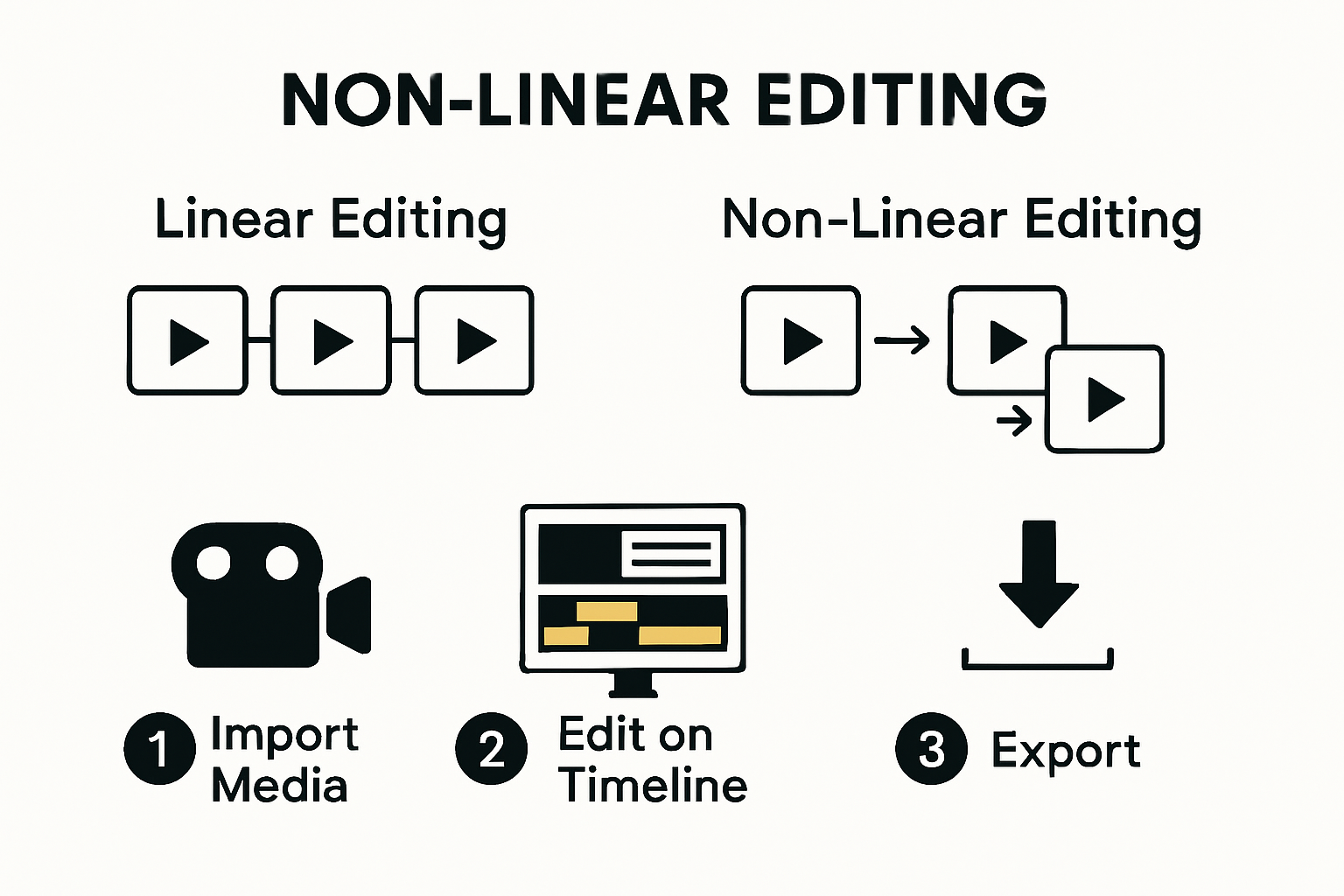
The Core Principles of Non-Linear Editing
At its essence, non-linear editing is a digital technique that allows editors to access and modify any segment of video or audio content without altering the original source material. Research from the National Institute of Media Technologies reveals that NLE systems enable professionals to work with multiple media files simultaneously, jumping between different sections of a project with remarkable ease.
The primary advantage of NLE lies in its non-destructive nature. Original media files remain intact, meaning editors can experiment freely without risking permanent changes to source content. This approach dramatically reduces the risk of irreversible mistakes and provides a safety net for creative exploration.
Technical Architecture of NLE Systems
Modern non-linear editing platforms operate through sophisticated digital workflows. According to experts at the Digital Media Institute, these systems typically involve three critical components:
-
Media Import: Ingesting high-resolution video and audio files from various sources
-
Non-Destructive Editing: Manipulating media without altering original files
-
Rendering: Generating final output with applied edits and effects
The technical infrastructure allows creative professionals to perform complex editing tasks that were previously impossible or extremely time-consuming. Editors can now:
-
Instantly preview changes
-
Experiment with multiple editing approaches
-
Quickly revise project sequences
-
Integrate multiple media types seamlessly
The Evolution of Editing Technology
Wikipedia’s comprehensive overview traces the evolution of NLE from early digital systems to today’s sophisticated platforms. What began as a revolutionary concept in the 1990s has now become the standard across film, television, marketing, and digital content production.
This technological progression has democratized video editing, enabling creators with varying skill levels to produce professional-quality content. From independent filmmakers to large production studios, non-linear editing has become an indispensable tool for storytelling and visual communication.
Understanding non-linear editing is not just about mastering software but embracing a fundamentally different approach to creative production. It represents a shift from linear, sequential thinking to a more dynamic, fluid method of visual storytelling.
Linear vs Non-Linear Editing: Key Differences
The world of video editing has undergone a dramatic transformation with the emergence of non-linear editing technologies. Understanding the fundamental differences between linear and non-linear editing is crucial for creative professionals seeking to optimize their workflow and creative potential.
To help clarify the distinctions between traditional linear and non-linear editing approaches discussed above, the following table summarizes their key differences:
| Feature | Linear Editing | Non-Linear Editing |
| Editing Process | Sequential, chronological | Access any part in any order |
| Flexibility | Very limited | Highly flexible |
| Editing Impact | Changes often require re-copying | Edits do not affect original files |
| Collaboration | Difficult for multiple editors | Supports simultaneous team workflows |
| Revision Speed | Time-consuming | Rapid, allows quick iteration |
| Media Handling | Physical tapes | Digital files, multi-format support |
| Creative Experimentation | Constrained by process | Easy to experiment and rollback changes |
The Traditional Linear Editing Approach
Research from the Museum of Victoria reveals that linear editing represents the original method of video production. In this traditional approach, editors worked with physical video tapes, copying scenes sequentially from one tape to another. This method imposed significant limitations on creative flexibility.
Linear editing requires a strict, chronological process where changes become exponentially complex. Inserting or deleting scenes meant re-copying entire subsequent sections of footage, making the editing process time-consuming and mechanically challenging. Professionals were essentially locked into a fixed sequence, with minimal room for spontaneous creative adjustments.
Non-Linear Editing: A Digital Revolution
Adobe’s comprehensive guide highlights the transformative nature of non-linear editing systems. Unlike linear methods, NLE allows editors to access and modify any segment of a project independently, without disrupting the entire timeline.
Key differences between linear and non-linear editing include:
-
Flexibility: NLE enables working on any clip in any order
-
Non-Destructive Editing: Original media remains untouched
-
Rapid Iteration: Quick revisions without complete project reconstruction
-
Simultaneous Workflow: Multiple team members can work on different project sections
Technological and Creative Implications
Experts from media technology research emphasize that non-linear editing represents more than a technical upgrade—it’s a fundamental shift in creative methodology. The digital approach empowers editors to experiment freely, preview changes instantly, and maintain complete project history.
The transition from linear to non-linear editing has democratized content creation. Small production teams and individual creators now have access to professional-grade editing capabilities that were previously available only to large studios with extensive resources.
While linear editing remains a foundational understanding for some traditional media professionals, non-linear editing has become the standard across film, television, digital marketing, and content creation. The ability to manipulate media without physical constraints has opened unprecedented creative possibilities, transforming how visual stories are conceived and crafted.
Benefits of Non-Linear Editing for Creative Teams
Non-linear editing has revolutionized the creative workflow, offering unprecedented advantages for teams working in visual media production. By transforming traditional editing constraints, NLE systems provide creative professionals with powerful tools to enhance their storytelling capabilities.
The following table summarizes the main benefits of non-linear editing for creative teams as discussed below:
| Benefit | Description |
| Enhanced Creative Flexibility | Rearranging, trimming, and modifying clips without sequential limitations |
| Streamlined Collaborative Workflows | Multiple team members edit simultaneously, reducing production timelines |
| Rapid Prototyping & Experimentation | Instantly try new ideas and visual concepts |
| Real-Time Feedback | Immediate previews and quicker iteration |
| Support for Multimedia Integration | Seamless combining of video, effects, and audio |
| Access to Advanced Editing Features | Multi-camera sync, color grading, effects |
| Empowerment for Small Teams and Creators | Professional results with fewer resources |
Enhanced Creative Flexibility
Research from Studocu demonstrates that non-linear editing systems provide creative teams extraordinary flexibility in manipulating visual content. Editors can now rearrange, trim, and modify video clips without being constrained by sequential limitations.
Collaborative workflows become significantly more streamlined with NLE technologies. Multiple team members can simultaneously work on different project components, reducing production timelines and increasing overall efficiency. This approach allows for:
-
Rapid prototyping of creative concepts
-
Instant visual experimentation
-
Seamless integration of complex multimedia elements
-
Real-time feedback and iterative design
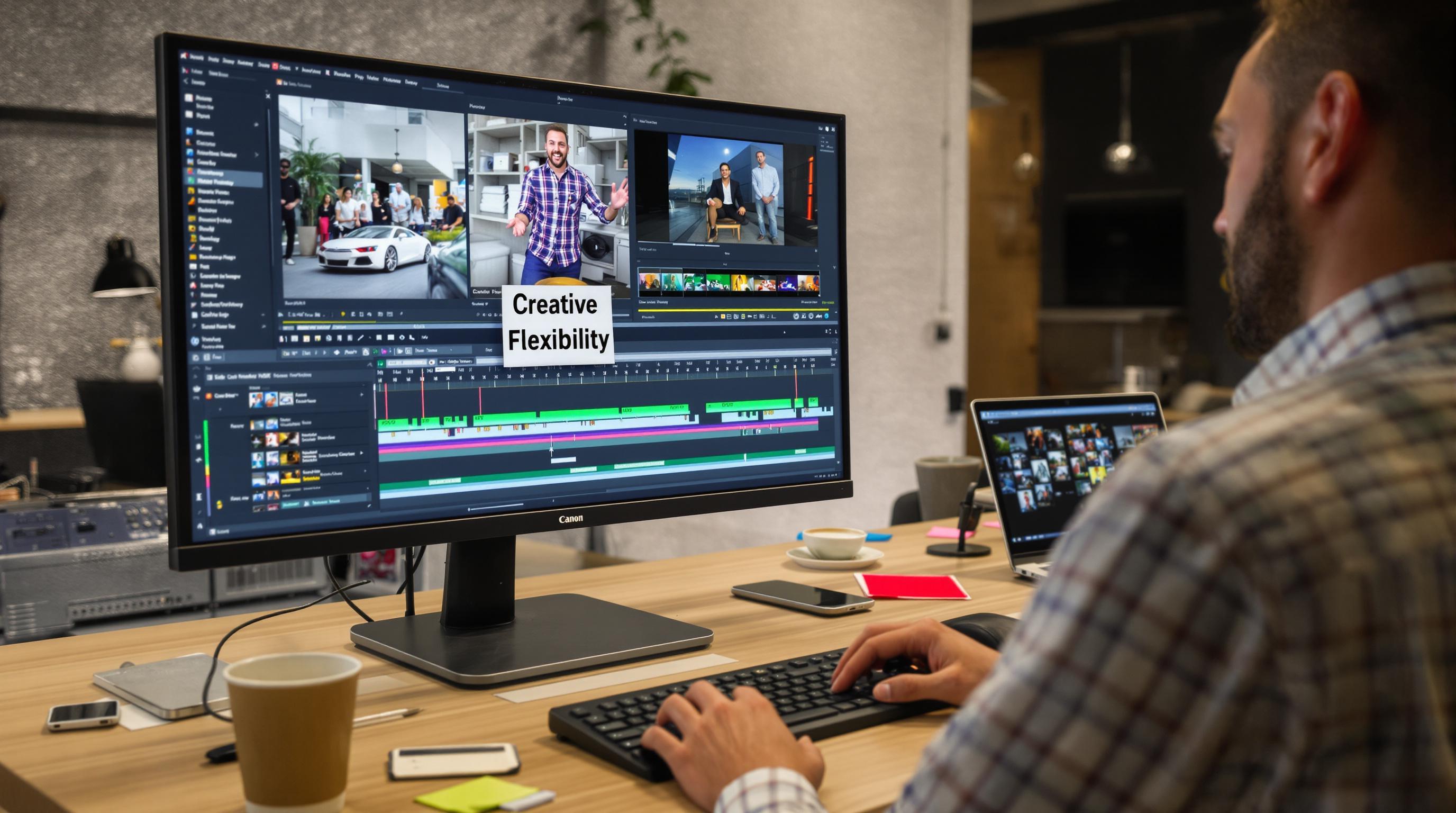
Advanced Editing Capabilities
Scribd’s comprehensive analysis highlights the sophisticated multi-camera editing capabilities inherent in modern NLE systems. Creative teams can now synchronize and switch between multiple camera angles effortlessly, a feature particularly valuable for complex production environments.
The real-time playback and preview functionalities enable editors to visualize changes instantaneously. Immediate visual feedback allows for more dynamic and responsive creative decision-making, dramatically reducing the time traditionally spent on revision cycles.
Technological Empowerment for Creative Professionals
Non-linear editing systems democratize high-end video production, enabling smaller teams and individual creators to achieve professional-grade results. The technological infrastructure supports:
-
Sophisticated visual effects integration
-
Advanced color grading capabilities
-
Complex audio mixing and synchronization
-
Seamless cross-platform media compatibility
Industry experts recognize that these technological advancements represent more than mere technical improvements. They signify a fundamental transformation in how creative narratives are conceptualized and executed.
For modern creative teams, non-linear editing is not just a tool but a comprehensive ecosystem that supports innovative storytelling. The ability to experiment, iterate, and refine visual content with unprecedented speed and precision has become a cornerstone of contemporary media production.
As technology continues to evolve, non-linear editing will undoubtedly remain a critical component in the creative workflow, offering teams the flexibility and power to bring their most ambitious visual concepts to life.
Essential Tools and Tips for Getting Started
Embarking on a non-linear editing journey requires strategic preparation and the right technological foundation. Creative professionals looking to master NLE must carefully select tools and develop a comprehensive learning approach.
Selecting the Right Non-Linear Editing Software
Research from StudySmartes reveals that choosing appropriate NLE software is crucial for successful video production. The market offers diverse options catering to different skill levels and project requirements.
Key professional-grade NLE software platforms include:
-
Adobe Premiere Pro: Comprehensive tool with extensive integration capabilities
-
Final Cut Pro: Apple ecosystem optimized professional solution
-
DaVinci Resolve: Advanced color grading and editing features
-
Avid Media Composer: Industry standard for high-end film and television production
Beginner recommendations focus on software with intuitive interfaces and robust learning resources. Factors to consider when selecting an NLE platform include:
-
User interface complexity
-
Available tutorial support
-
System hardware requirements
-
Pricing and subscription models
-
Compatibility with existing creative workflows
Learning Strategies and Skill Development
Coursera’s expert guidance emphasizes the importance of structured learning approaches for mastering non-linear editing. Successful skill acquisition involves a multifaceted strategy combining theoretical knowledge and practical experience.
Effective learning pathways include:
-
Online tutorial platforms
-
Professional certification courses
-
YouTube tutorial channels
-
Community forums and peer learning groups
-
Practice projects with incrementally increasing complexity
Essential Technical Preparation
Fiveable’s research highlights the technical considerations crucial for optimal non-linear editing performance. Proper hardware and organizational strategies significantly impact editing efficiency.
Technical recommendations for aspiring editors:
-
Invest in a high-performance computer with dedicated graphics processing
-
Maintain organized media storage and backup systems
-
Use external SSDs for faster media access
-
Develop consistent file naming and project management protocols
-
Regularly update software and maintain system compatibility
Successful non-linear editing is not just about technical proficiency but developing a creative mindset. Embrace continuous learning, experiment boldly, and view each project as an opportunity to refine your skills and storytelling capabilities.
Remember that mastery comes through consistent practice, patience, and a willingness to explore the expansive creative potential of non-linear editing technologies.
Frequently Asked Questions
What is non-linear editing?
Non-linear editing (NLE) is a digital video editing process that allows editors to access and modify any part of a project without changing the original media files, offering greater creative flexibility and efficiency.
How does non-linear editing differ from linear editing?
Unlike linear editing, which requires a sequential and chronological process, non-linear editing allows for instant access to any clip in any order, facilitating easier revisions and creative experimentation.
What are the benefits of using non-linear editing for creative teams?
Non-linear editing offers enhanced creative flexibility, advanced editing capabilities, streamlined collaboration, real-time feedback, and the ability to integrate multimedia elements seamlessly, empowering even small teams to produce professional-quality content.
Which software is best for non-linear editing?
Popular non-linear editing software includes Adobe Premiere Pro, Final Cut Pro, DaVinci Resolve, and Avid Media Composer. The best choice depends on your experience level, project needs, and budget.
Transform Your Non-Linear Editing Workflow with Pikd
You already know how powerful non-linear editing can be. The freedom to rearrange clips, collaborate with teams, and iterate rapidly is at the heart of creativity. But even after the edit, sharing your high-resolution projects, gathering client feedback, and delivering final files can turn into a bottleneck. Clunky folders and generic file delivery slow your momentum and can leave your work looking less professional than it deserves.

Experience what seamless collaboration feels like. Pikd was built for creative teams that care about every detail of their workflow. Move from editing to feedback and delivery in a single, visual-first platform. Upload, organize, and share polished galleries instead of chaotic folders. Get real-time comments, keep control over your files with flexible permissions, and export selects right to your editing tools. Ready to elevate both your process and your client experience? Join other forward-thinking editors and take your next step with Pikd for creative teams today.








